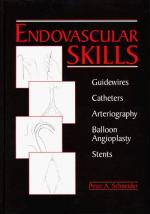|
This section contains 583 words (approx. 2 pages at 300 words per page) |

|
Angioplasty is a medical procedure used to widen an artery that is narrowed or blocked. A narrowed or blocked artery prevents blood from getting to where it is needed. It is usually caused by an accumulation of fatty deposits within the artery (atherosclerosis). The accumulation of fatty deposits is called a plaque. The goal of angioplasty is to return adequate blood supply to regions that are deprived.
There are two conditions that can be treated with angioplasty. The first is coronary artery disease, which is characterized by decreased blood flow to the heart. The second is peripheral vascular disease, which results from blocked arteries in the limbs, especially the legs.
Coronary angioplasty is performed by a cardiologist, a physician who specializes in heart disorders. The procedure consists of inserting a catheter, or very thin tube, through the artery to the plaque's location. (The blockage is located by angiography...
|
This section contains 583 words (approx. 2 pages at 300 words per page) |

|


